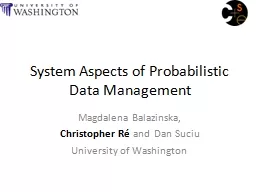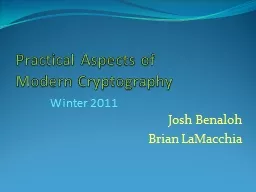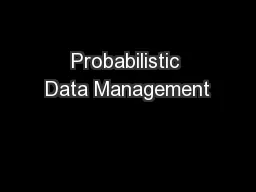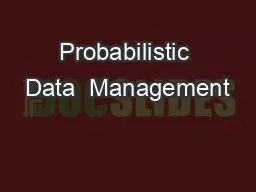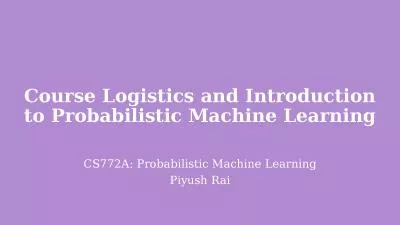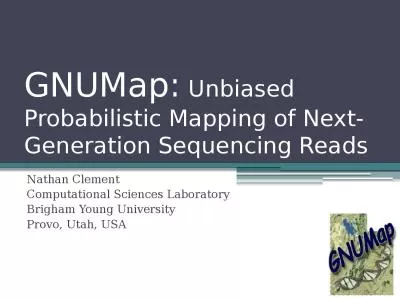PPT-System Aspects of Probabilistic Data Management
Author : phoebe-click | Published Date : 2018-12-06
Magdalena Balazinska Christopher Ré and Dan Suciu University of Washington One slide overview of motivation Data are uncertain in many applications Business
Presentation Embed Code
Download Presentation
Download Presentation The PPT/PDF document "System Aspects of Probabilistic Data Man..." is the property of its rightful owner. Permission is granted to download and print the materials on this website for personal, non-commercial use only, and to display it on your personal computer provided you do not modify the materials and that you retain all copyright notices contained in the materials. By downloading content from our website, you accept the terms of this agreement.
System Aspects of Probabilistic Data Management: Transcript
Download Rules Of Document
"System Aspects of Probabilistic Data Management"The content belongs to its owner. You may download and print it for personal use, without modification, and keep all copyright notices. By downloading, you agree to these terms.
Related Documents

